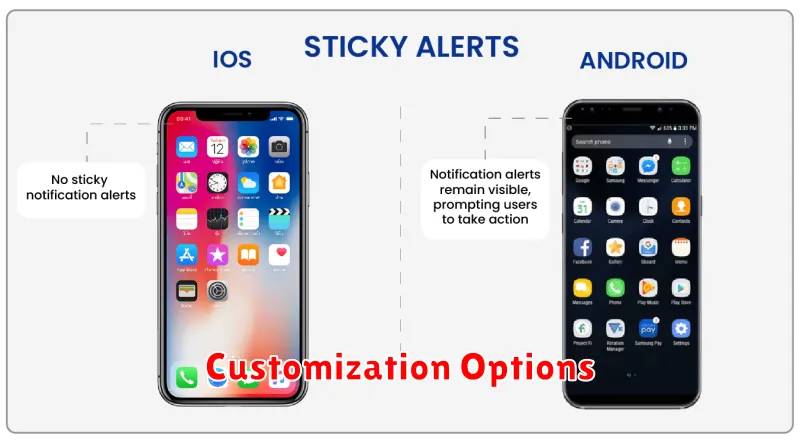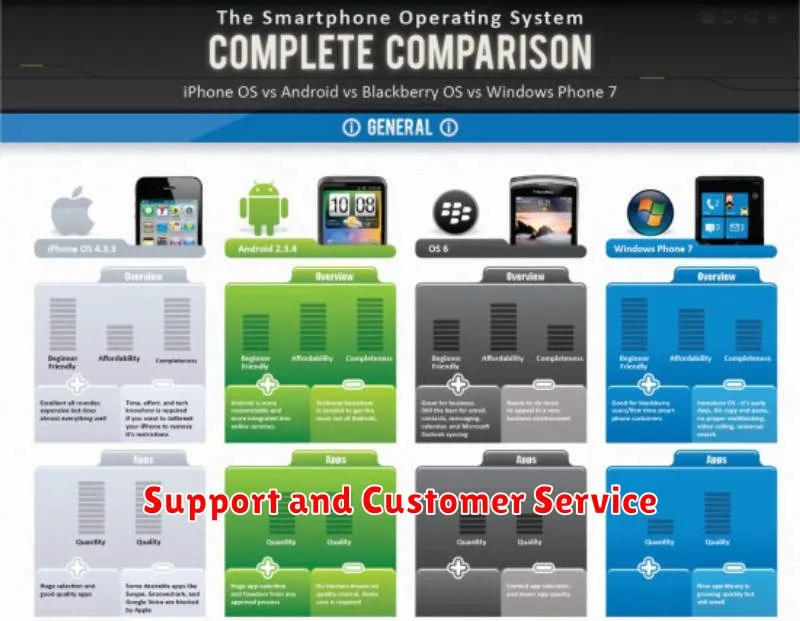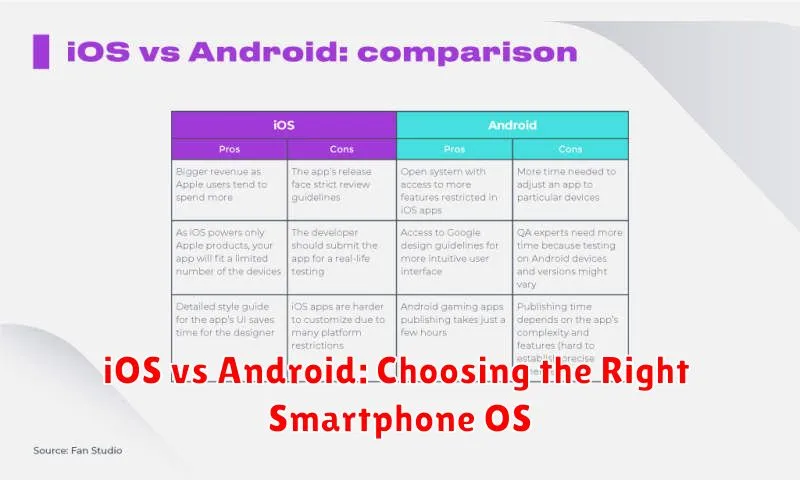Choosing the right smartphone operating system (OS) can be a daunting task. With the two dominant mobile platforms, iOS and Android, vying for your attention, understanding the key differences is crucial. This article delves into the iOS vs. Android debate, providing a comprehensive comparison to help you make an informed decision. We will explore the strengths and weaknesses of each smartphone OS, considering factors such as performance, security, app ecosystem, customization, and price, ultimately guiding you toward the platform that best suits your needs and preferences. Whether you prioritize a seamless user experience, extensive customization options, or a vast app selection, understanding the nuances of each platform is essential.
The iOS vs. Android debate is a long-standing one, with passionate advocates on both sides. Apple’s iOS, renowned for its simplicity and user-friendliness, offers a tightly controlled ecosystem with a focus on performance and security. On the other hand, Google’s Android, celebrated for its open-source nature and flexibility, provides extensive customization options and a wider range of hardware choices. This article aims to dissect these core differences, exploring the advantages and disadvantages of each operating system to help you determine which smartphone OS reigns supreme for your individual requirements. By examining factors like app availability, hardware compatibility, and overall user experience, we will empower you to make a confident choice in the iOS vs. Android dilemma.
User Interface and Ease of Use
Both iOS and Android offer visually appealing interfaces, but their approaches differ. iOS is known for its simplicity and intuitive design, focusing on a uniform experience across apps. Its streamlined interface is generally considered easier to learn, especially for new smartphone users.
Android offers greater flexibility and customization. Users can personalize their home screens with widgets, change launchers, and more. This level of customization allows for a more tailored experience but can sometimes feel overwhelming for less tech-savvy individuals.
Navigation patterns also differ slightly. iOS traditionally relies on a single home button, while Android utilizes a combination of on-screen buttons and gestures. Both operating systems have evolved to incorporate gesture-based navigation more prominently.
Customization Options

A key differentiator between iOS and Android lies in the level of customization they offer. Android is renowned for its open-source nature, allowing for extensive personalization.
Users can modify almost every aspect of the interface, from widgets and launchers to icon packs and system-wide themes. This flexibility makes Android a popular choice for those who value a highly personalized user experience.
iOS, on the other hand, offers a more controlled environment. While customization options have increased over time, they remain more limited compared to Android. Users can personalize aspects like wallpapers, widgets, and app arrangement, but core system modifications are restricted. This streamlined approach contributes to iOS’s reputation for simplicity and ease of use.
App Store and App Quality
A key differentiator between iOS and Android lies in their respective app stores and the overall quality of apps offered. Apple’s App Store is known for its stringent review process, which prioritizes security and quality control. This results in a generally more curated selection of apps, with a lower likelihood of encountering malware or low-quality software.
While the Google Play Store offers a larger quantity of apps, the open nature of Android allows for more variability in app quality. This can lead to a greater range of choices, but also increases the potential for encountering apps with bugs, security vulnerabilities, or subpar design. Users need to exercise more caution when downloading apps from the Google Play Store.
Security and Privacy Features
Both iOS and Android have robust security and privacy features, although their approaches differ. iOS historically has emphasized a tighter, more controlled environment, with a focus on built-in security measures and strict app store vetting. Android, being open-source, offers more flexibility and customization options, along with granular control over permissions.
Key aspects to consider include app sandboxing, which isolates apps to prevent data breaches. Both operating systems employ this technique. Another key feature is data encryption, protecting user information from unauthorized access. Both iOS and Android provide this crucial security measure.
Software Updates and Longevity
A key difference between iOS and Android lies in their approach to software updates and device longevity. iOS devices typically receive major software updates for five to six years, ensuring consistent access to new features and security patches. This contributes to a longer usable lifespan for iPhones.
Android updates, however, are more fragmented. While Google releases new Android versions annually, the rollout to individual devices depends heavily on the manufacturer and carrier. This often results in a shorter update window for Android phones, typically two to three years for flagship models, and even less for budget devices. This disparity affects the long-term security and feature availability of Android smartphones.
Integration with Other Devices
A key consideration when choosing a smartphone OS is its ability to seamlessly integrate with other devices in your ecosystem. Both iOS and Android offer distinct approaches to device integration.
iOS excels in its tight integration with other Apple products. This creates a cohesive user experience across iPhones, iPads, Macs, and Apple Watches. Features like AirDrop, Handoff, and Universal Clipboard allow for effortless sharing and continuity between devices.
Android, while offering broader compatibility across a range of brands, often lacks the same level of seamless integration. While features like Nearby Share exist, the experience can vary depending on the specific Android devices and manufacturers involved.
Price Range and Availability
A key differentiator between iOS and Android lies in their respective price ranges and availability. iOS devices, exclusively manufactured by Apple, tend to occupy the premium segment of the market. While older models can be found at lower prices, new iPhones generally command a higher price tag.
Android devices, on the other hand, offer a much broader range of price points. Due to the open-source nature of the operating system and numerous manufacturers utilizing it, Android smartphones are available from budget-friendly to premium flagship models. This allows for greater flexibility in choosing a device that aligns with one’s budget.
In terms of availability, both operating systems are widely accessible globally. However, specific device models and carrier support may vary depending on region.
Support and Customer Service

Apple devices benefit from a tightly controlled ecosystem, resulting in generally consistent customer support experiences through Apple Stores and authorized service providers. This centralized approach often leads to quicker resolutions for hardware or software issues.
Android support, conversely, varies depending on the device manufacturer and carrier. While Google provides base-level support for the Android OS, troubleshooting hardware problems or specific software features often involves navigating multiple support channels. This can sometimes result in a less streamlined support experience.
Pros and Cons of Each Platform
iOS
Pros: iOS is known for its simplicity and user-friendliness. It offers a seamless user experience with tight hardware and software integration, resulting in smooth performance. iOS also boasts a robust app ecosystem and a strong emphasis on privacy and security.
Cons: iOS devices are generally more expensive. Customization options are limited compared to Android. There is also less flexibility in terms of file management and connecting to external devices.
Android
Pros: Android offers greater flexibility and customization. It boasts a wider range of hardware options at various price points. Android also provides more open access to the file system and supports a wider range of external devices.
Cons: Android’s open nature can sometimes lead to fragmentation, meaning not all devices receive timely updates. The user experience can vary across different manufacturers and models. While improving, Android’s security can sometimes be a concern due to its open ecosystem.
Making the Best Choice for Your Lifestyle
Selecting between iOS and Android goes beyond simply comparing specifications. It’s about understanding how each operating system integrates into your daily routine. Consider your digital ecosystem. Are you heavily invested in other Apple products? If so, iOS offers seamless integration with Macs, iPads, and Apple Watches.
Think about your technological comfort level. iOS is renowned for its user-friendliness and simplicity. Android, on the other hand, allows for greater customization and flexibility. Budget is also a key factor. Android phones offer a wider range of price points, including many budget-friendly options, while iPhones tend to be positioned at the higher end of the market.
Finally, reflect on your app usage. While most popular apps are available on both platforms, some niche apps might be exclusive to one or the other. Examine your needs and choose the OS that best supports your everyday activities and digital life.

